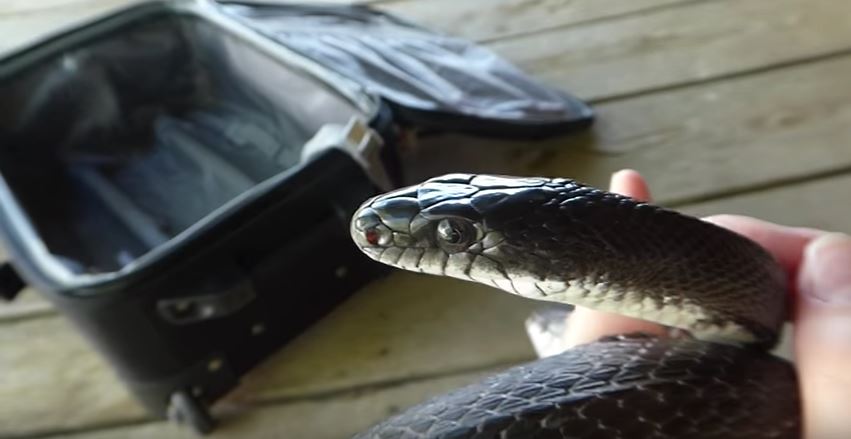The Black Rat Snake: appearance, biology, life cycle, habitat, diet, behavior

Biology
The black rat snake is within the Squamata order, Colubridae family and Elaphe Obsoleta genus/species.
Appearance
The rat snake is of a medium size that averages 42-72 inches in its length. The widest point of the snake is around 1.5 inches in diameter. The snake has keeled scales, a slender body that is very powerful, and a head that is wedge shaped. It has an anal plate that is divided. There are different subspecies that are located all over the United States.
The snake is black as the name suggests, but it has a white chin. The hatchlings have a background that is grey and black blotches on the backside. This color gets darker and disappears in the adult phase.
Behavior
Most black rat snakes are very shy, and in most cases they will do their best to avoid any confrontation. When confronted by any danger, the animals will freeze and stay motionless. Adults sometimes attempt to protect themselves. The animals coil and vibrate their tails so as to stimulate a rattle in dead leaves. If you continue provoking the snake, it will strike.
They also produce a musk that is foul smelling and it acts as a deterrent. Some of the sub-species are aggressive. Some of them are snappy and they are great swimmers.
Habitat
These snakes can be found from New England all the way to Florida. They also inhabit the eastern half of Texas as well as Nebraska. They can be found in southern Wisconsin. It is a very common and widely distributed rat snake and it has a very wide range. Northern New York and southern Canada also have an isolated population.
Diet
The black rat snake is primarily a rodent eater. They also have other food preferences. The rat snakes can feed on small frogs, baby mice, and small lizards when they are juveniles. The adults have a diet mainly consisting of rats, mice, chipmunks, and moles among many other rodents. They can also feed on eggs.
Life cycle
The life cycle of the black rat snake isn’t well known.
Go back to the How to Get Rid of Snakes page or email us if you have any other questions about The Black Rat Snake: appearance, biology, life cycle, habitat, diet, behavior
About Us
We are the Pest Education Network, a non-profit organization that focuses on wildlife and pest removal education. Our approach utilizes Integrated Pest Management, a strategy advocating prevention and humane methods.


